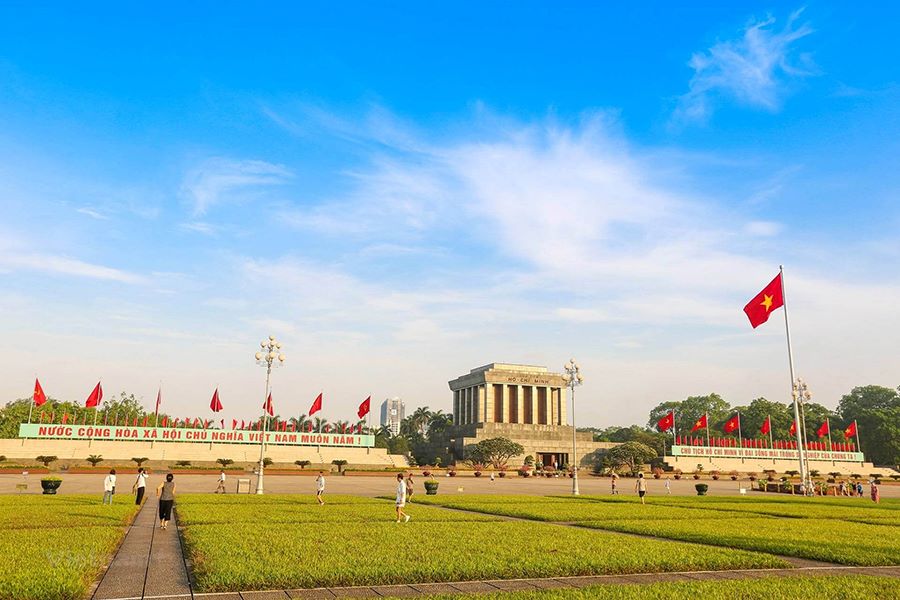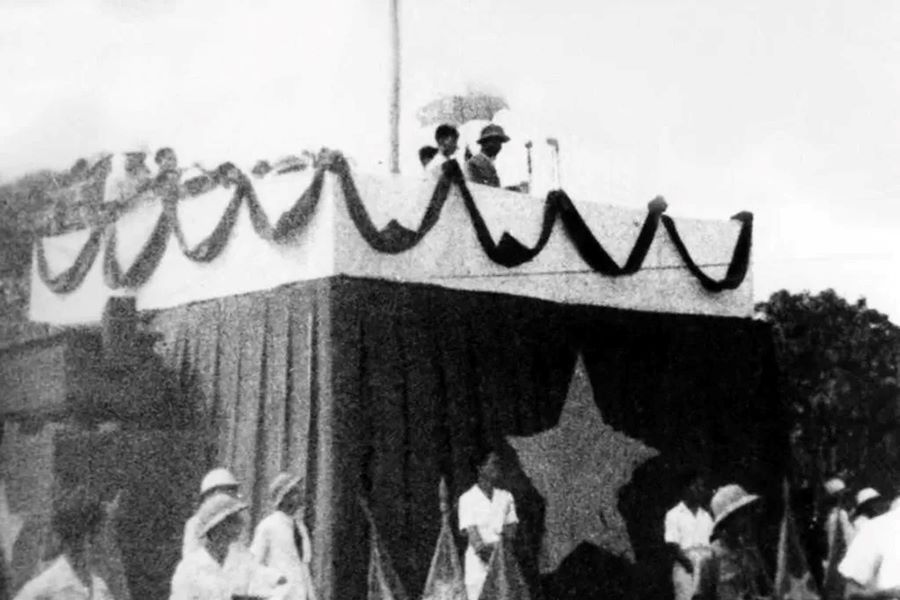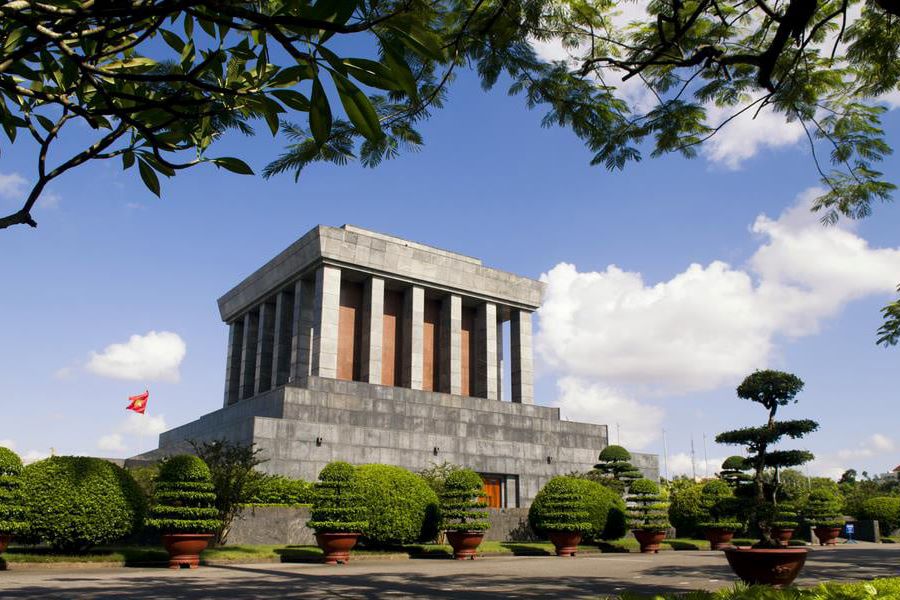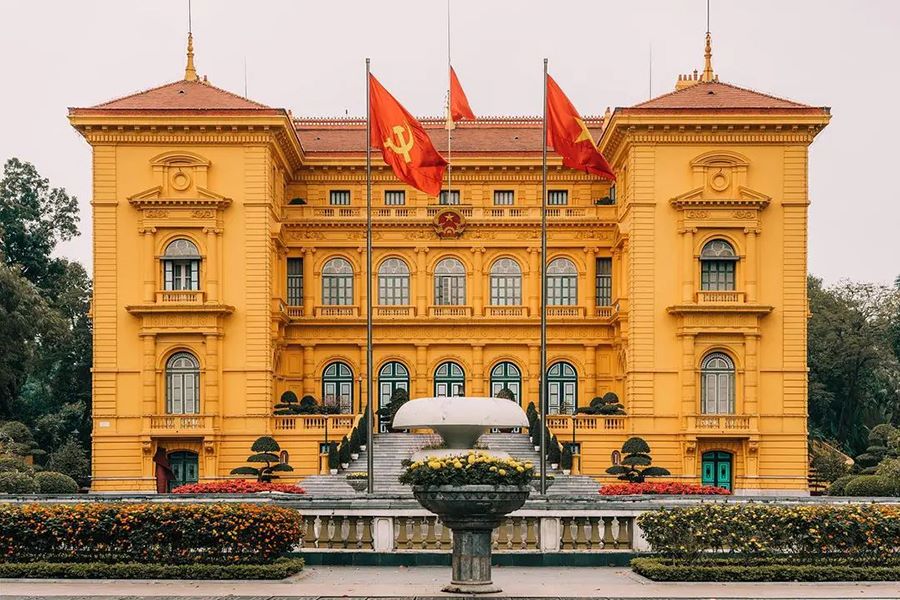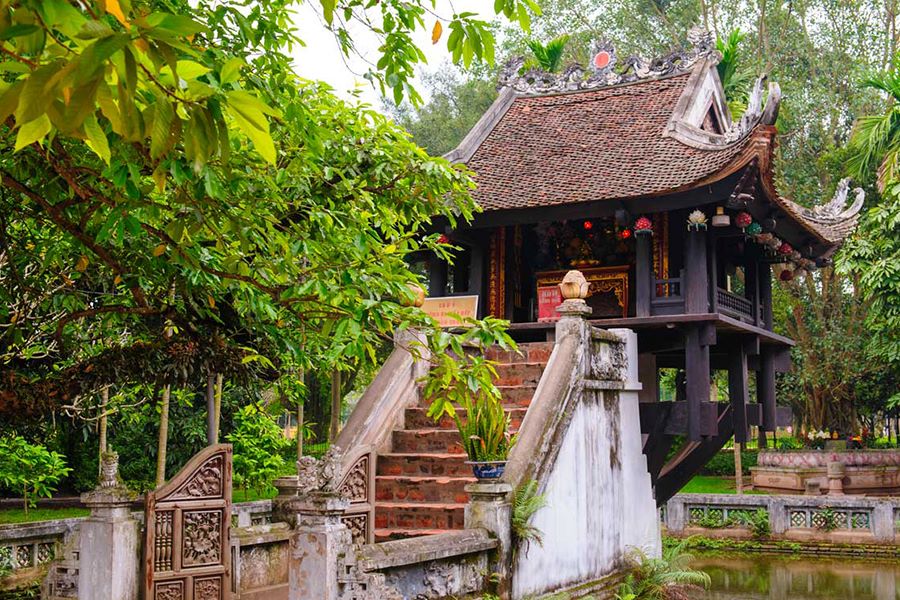The largest square in Vietnam, Ba Dinh Square, was the scene of several significant national historical events in contemporary history. Every Indochina itinerary includes this national landmark as one of its top stops. Aside from indulging in delicious Vietnamese cuisine, one of the things you should definitely do when visiting Hanoi is to go to Ba Dinh Square. Since President Ho Chi Minh issued the Vietnam Declaration of Independence in 1945, this landmark has witnessed the country's highs and lows. This post teaches you fascinating facts about this important historical site in Hanoi.
How Wide is Ba Dinh Square?
With a length of 367 meters and a width of 85 meters, Ba Dinh Square can hold 200,000 people. It consists of 210 grassy squares joined by broad walkways.
Location of Ba Dinh Square
Hung Vuong Street leads to Ba Dinh Square, which is situated in Hanoi's Ba Dinh District. The Ho Chi Minh Mausoleum Complex, a sizable collection of historical and cultural landmarks, is also located here. To the north of the square is the Office of the Central Committee of the Communist Party of Vietnam; to the south is the Ministry of Foreign Affairs headquarters; to the west is Ho Chi Minh Mausoleum; and to the east is Ba Dinh Hall.
Ba Dinh Square History
Ba Dinh Square in the Feudal Age
Under King Gia Long's rule in 1808, Thang Long Imperial Citadel was renovated to become a new, smaller citadel. The western portion of this castle, which King Minh Mang subsequently dubbed "Hanoi," was once Ba Dinh Square.
Ba Dinh Square in the French Colonial Period
When the French took over all of Indochina in 1894, they razed the citadel, leaving the area around Ba Dinh Square as undeveloped territory. This site was intended to serve as the administrative center of the Indochinese Federation by French architects. Le Parc Pugininer, a floral garden, was constructed on this land.
Ba Dinh Square in the period of Independence
Mayor Tran Van Lai changed the French names of several streets and locations in Hanoi to Vietnamese when the Vietnamese retook control of the city in 1945. In honor of a resistance force that battled French colonists in Ba Dinh, Thanh Hoa Province, the Le Parc Pugininer Garden was renamed Ba Dinh Square (1886-1887).
Following that, the name was varied multiple times, first to Independence Square and then to Hong Bang Garden, until President Ho Chi Minh chose to stick with "Ba Dinh."
Best Things to Do & See in Ba Dinh Square
Located at the heart of the Ho Chi Minh Mausoleum Complex, Ba Dinh Square is unquestionably one of the must-see sights in Hanoi. When you arrive in the square, you can also explore a variety of adjacent historical and cultural sites:
Ho Chi Minh Mausoleum
The Ho Chi Minh Mausoleum is an important piece of art that reflects the deep love that the Vietnamese people have for the founder of the Communist Party of Vietnam and the well-known revolutionary hero President Ho Chi Minh. It is located in front of the square Ba Dinh. The exact address is Dien Bien Ward, Ba Dinh District, No. 2, Hung Vuong Street.
The Ho Chi Minh Mausoleum is a square-shaped structure that is 41.2 meters wide and 21.6 meters high. The mausoleum's structure is designed to be incredibly resilient; it can endure bombs, floods, and earthquakes of magnitude 7.
Ho Chi Minh Museum
The life and work of President Ho Chi Minh are honored at the Ho Chi Minh Museum. It uses pictures, dioramas, relics, pop-art paintings, and graphics to convey the tale of Ho Chi Minh's life at different points, from the day of his birth to the day of his death.
Presidential Palace
President Ho Chi Minh lived and worked in the Presidential Palace, which is a part of the Presidential Palace Historical Site complex, from December 19, 1954 to September 2, 1969. Constructed between 1900 and 1906, the Presidential Palace served as the official house of the Governor-General of French Indochina. Taking over seven years to construct, this European-styled structure was the most opulent at the time.
Uncle Ho's Stilt House
President Ho Chi Minh returned to Hanoi in 1954 following the conclusion of the war with France. The Presidential Palace was too luxurious for him to live in. Rather, he worked and lived in a modest home next to a pond. Wooden stilts provide most of the support for the house. His belongings are all over the place inside. The lush vegetation all around creates a serene, entrancing, and open setting. Visiting this location allows visitors to witness Uncle Ho's magnificence and simplicity.
One Pillar Pagoda
The One Pillar Pagoda is renowned for both its historical significance and exquisite architecture. It is stated that the structure of the pagoda resembles a lotus flower emerging from water. The lotus flower, commonly referred to as the flower of dawn, is a representation of commitment, calm, purity, and hope for the future. Locals regularly pray for prosperity, happiness, and good fortune here. One Pillar Pagoda is a must-visit tourist destination in Hanoi if you're interested in Buddhist architecture.
Ba Dinh Square Travel Guide
- Every day, from April through October, the flag-raising ceremonies begin at 6:00 a.m. or 6.3 a.m. (from November to March)
- Every day at 9:00 p.m., there are ceremonies to lower the flag.
- Ba Dinh Square is entirely free to enter.
- Avoid leaving trash in the square and avoid walking on the grass.
- Inside the room where President Ho Chi Minh's body is kept, do not record or take pictures.
Ba Dinh Square, which has seen all of the ups and downs of the nation, is a historically significant location in Hanoi. Don't forget to include this place in your itinerary if you're heading to the capital of Vietnam!

